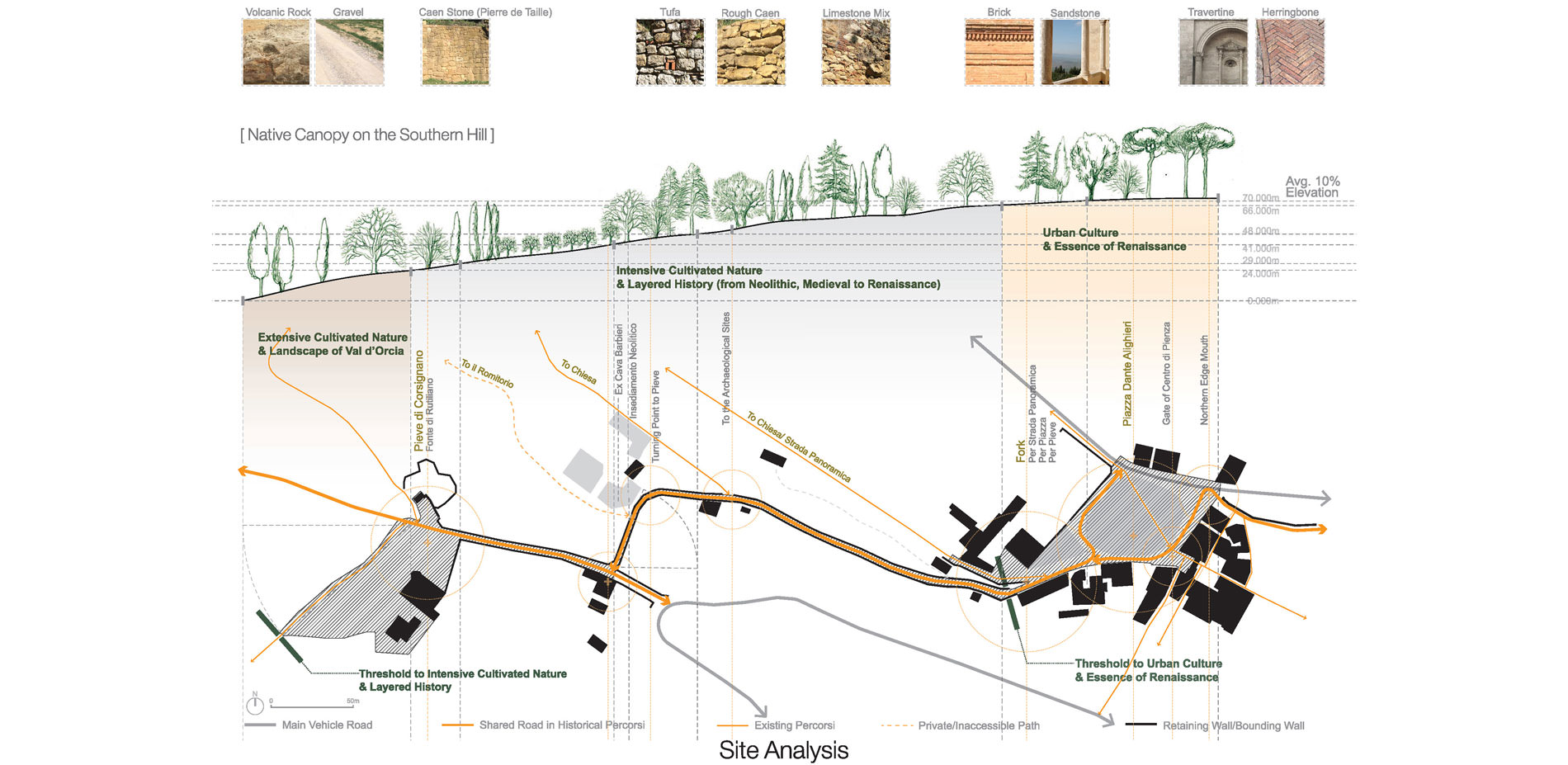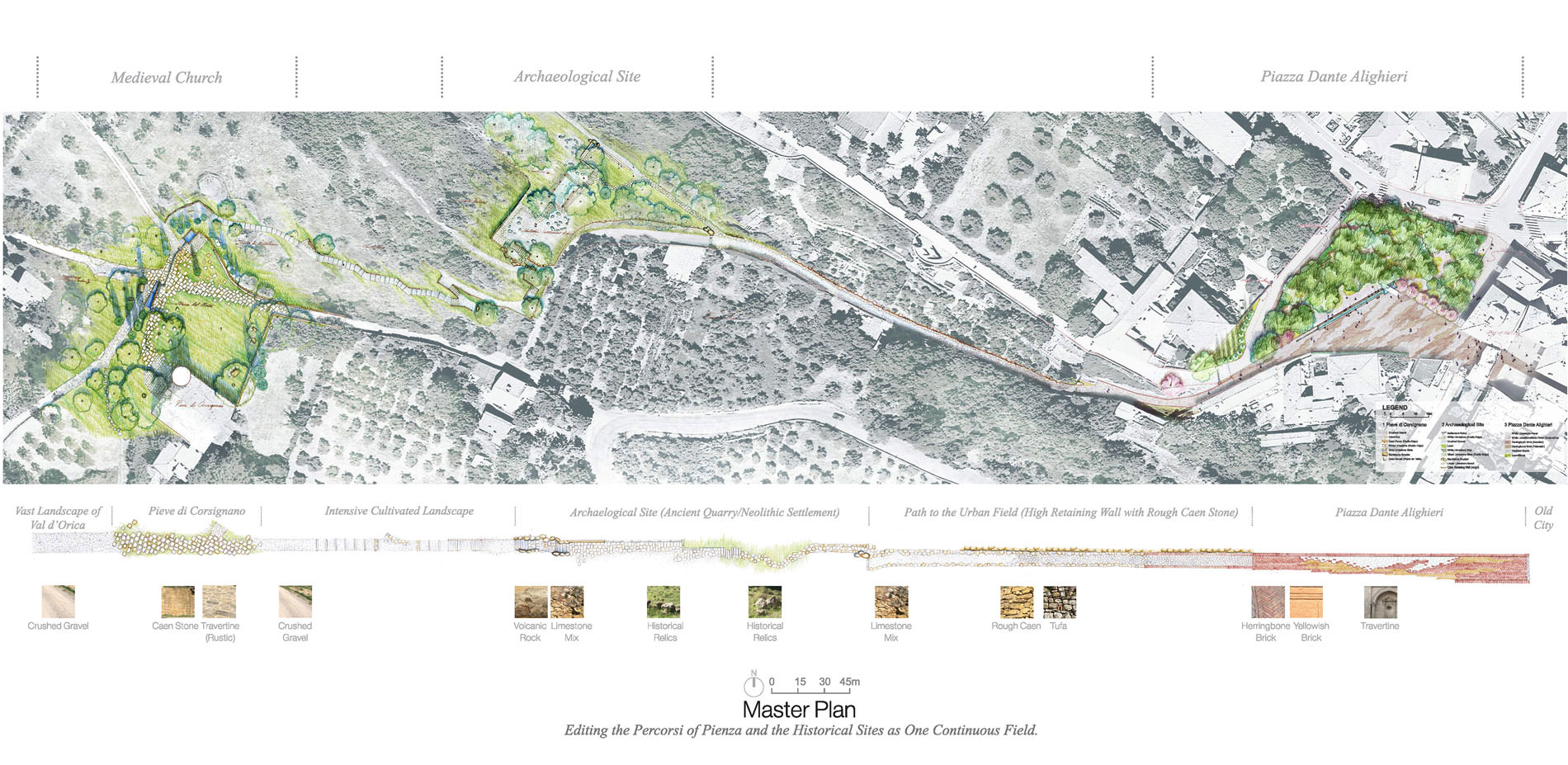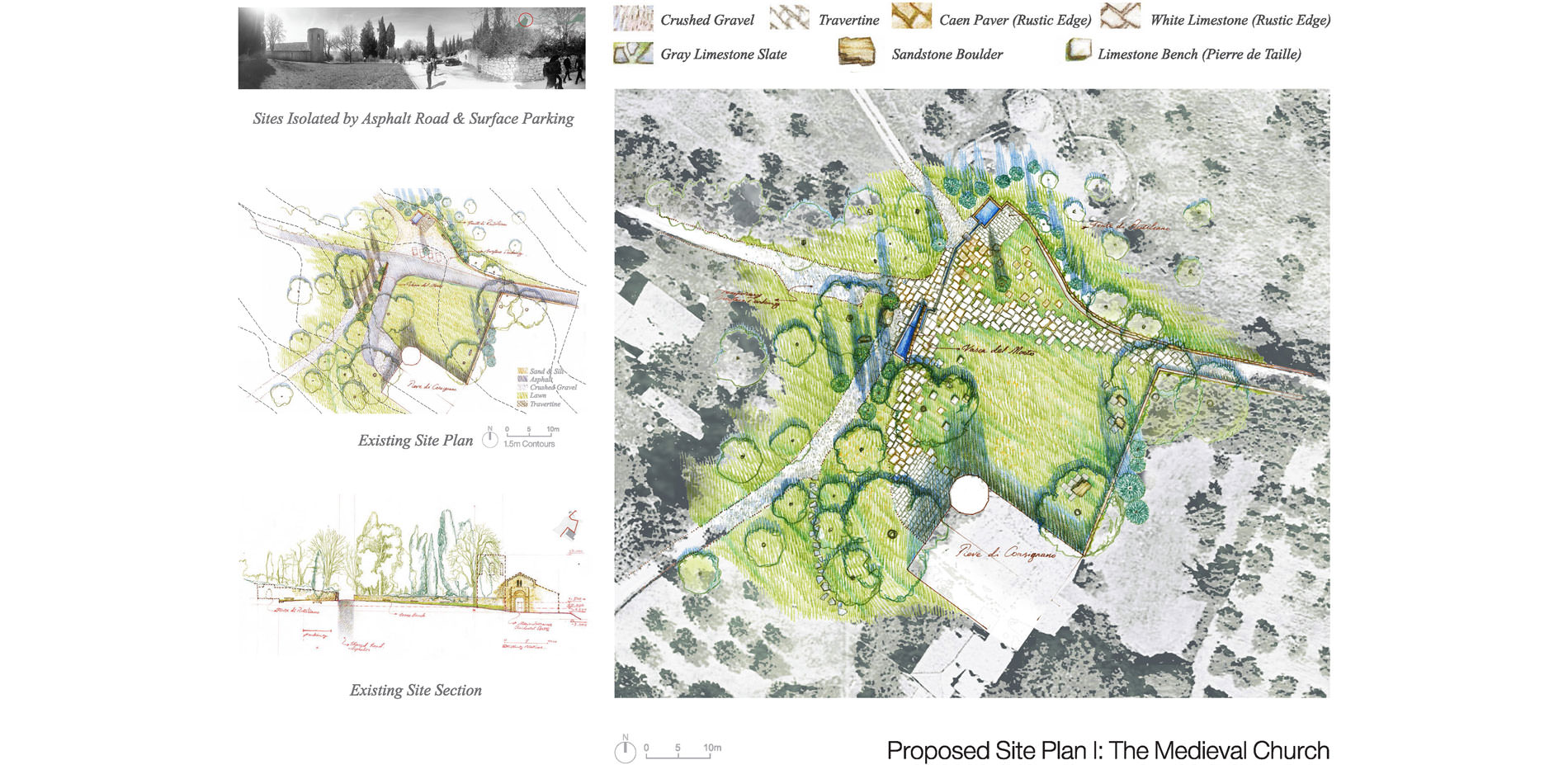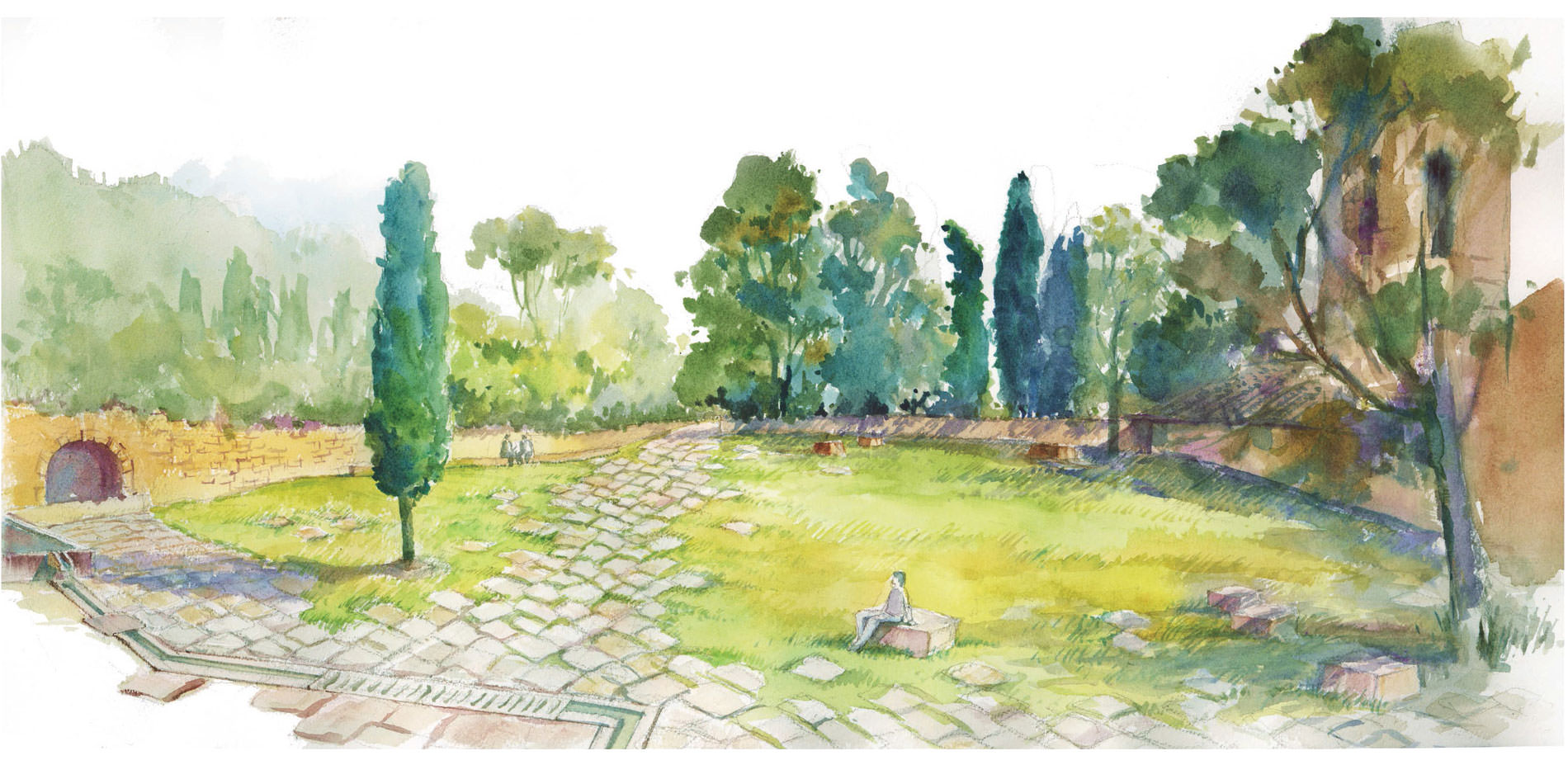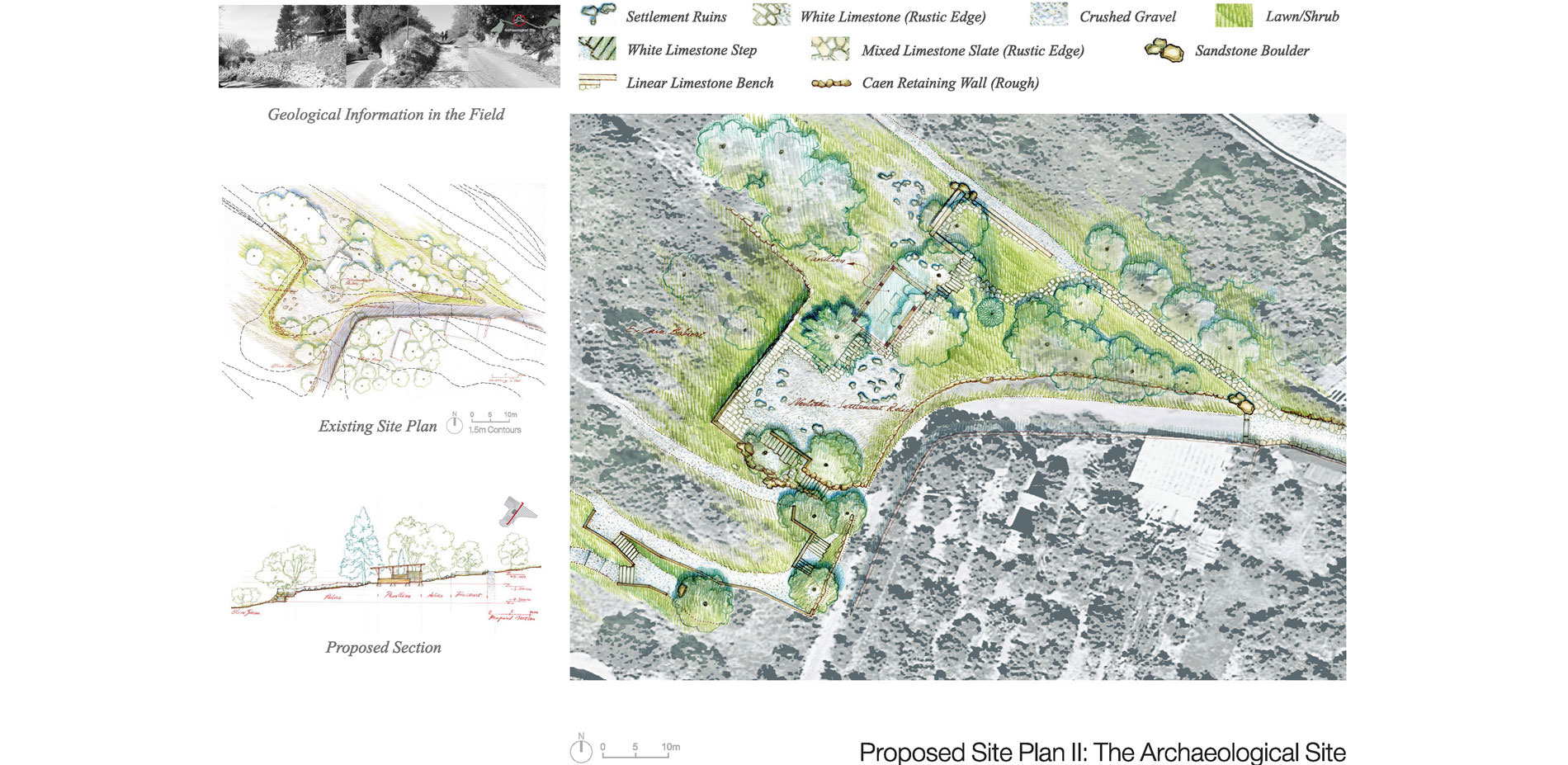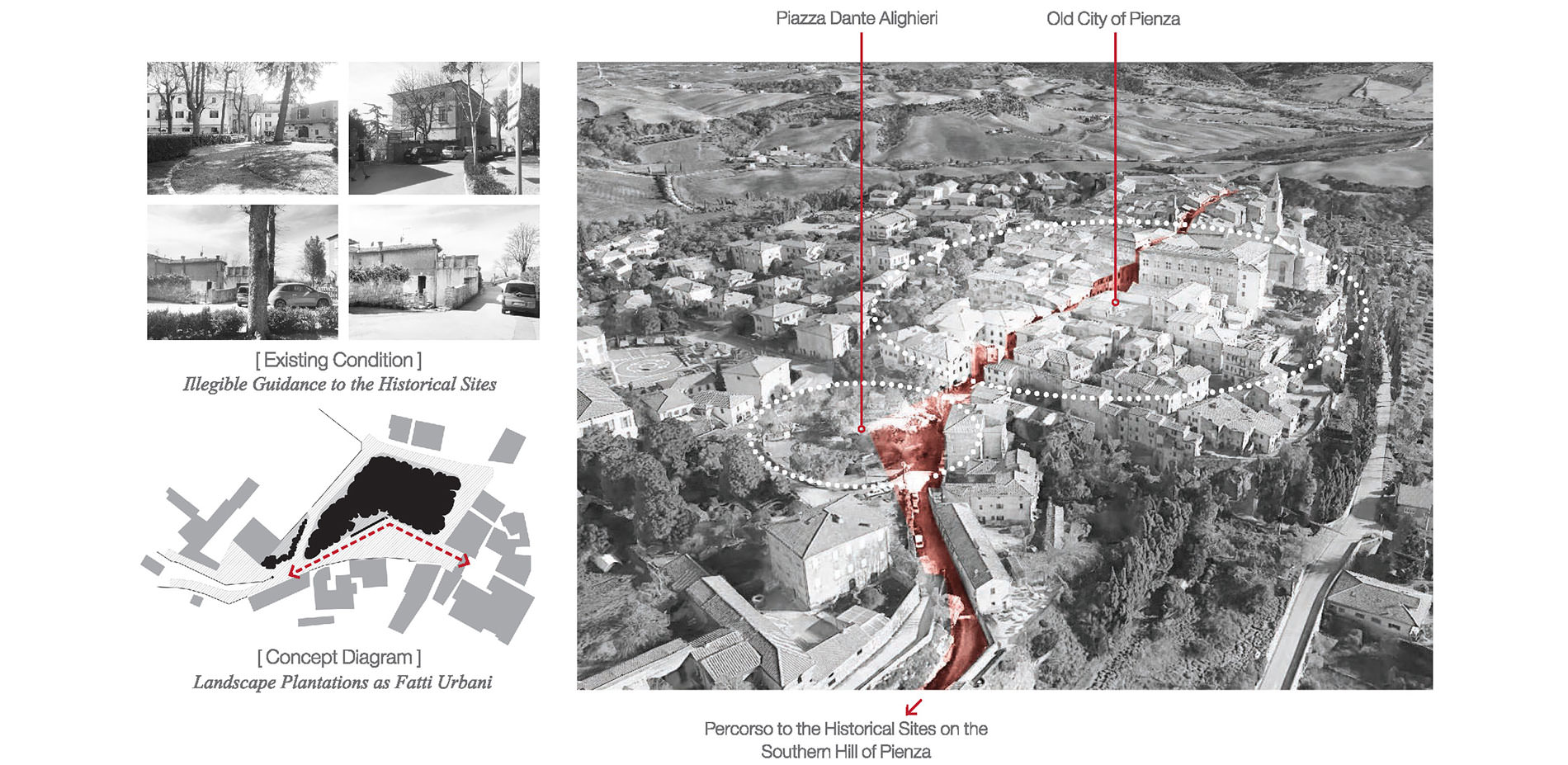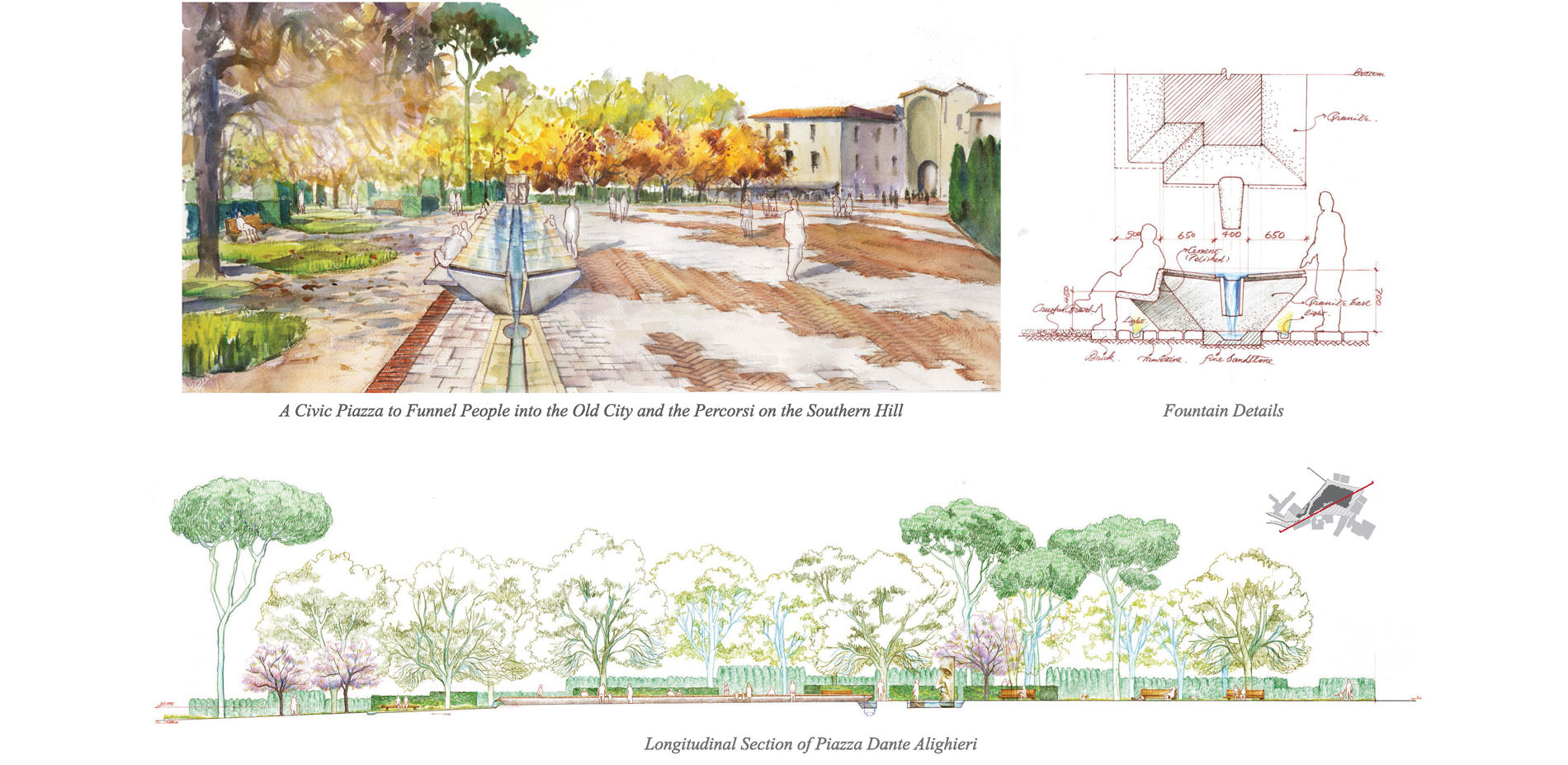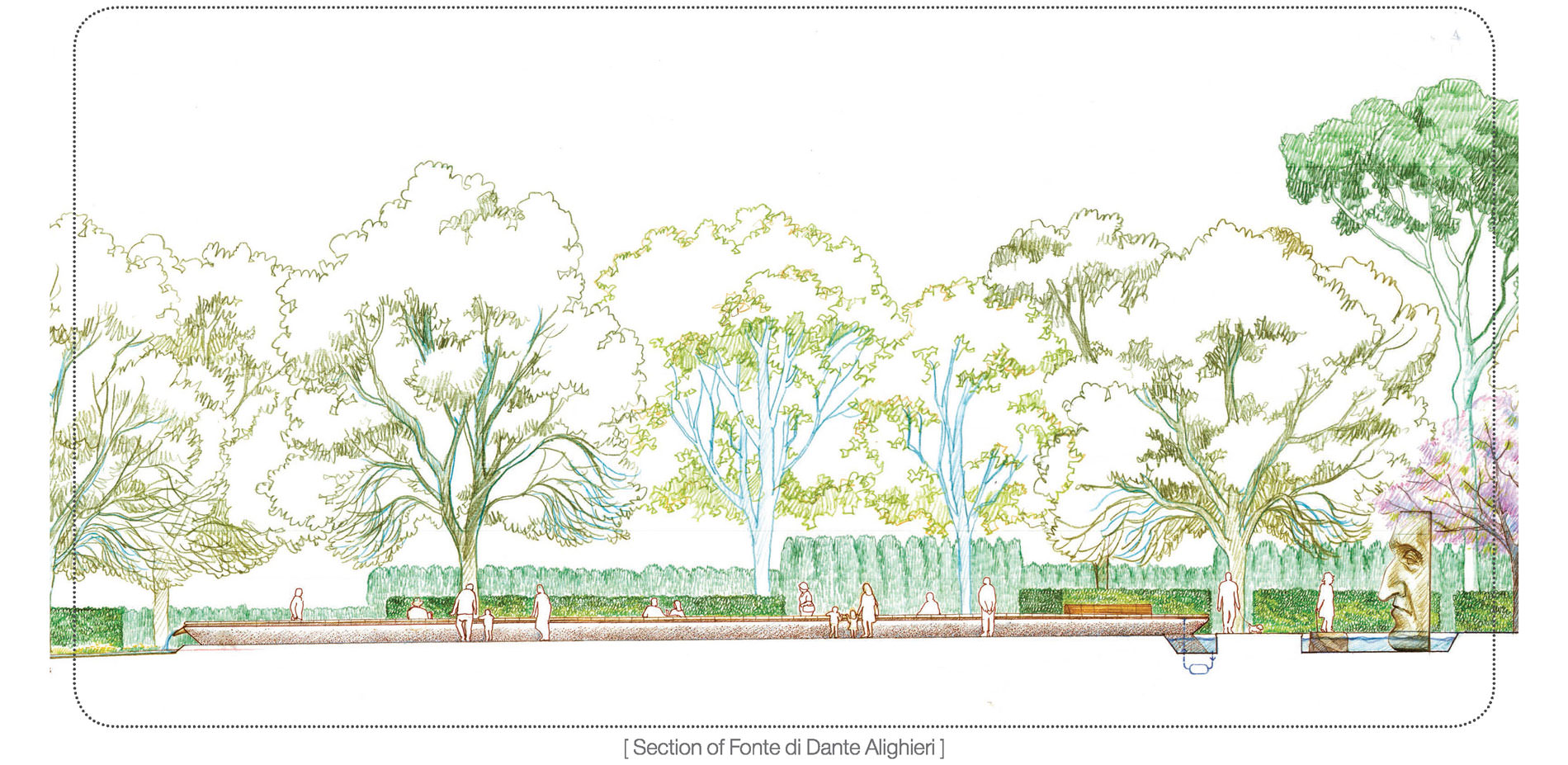Create a Walkable History: Editing the Historical Percorsi of Pienza
HONOR
General Design
Pienza, Italy | Zhengneng (Albert) Chen, Student ASLA | Faculty Advisors: Laurie Olin, FASLA; Frederick Steiner, FASLA; Rebeca Popowsky; Randy Mason
University of Pennsylvania
This was a realistic, implementable project. It could be very beautiful without requiring a huge investment. It operates at a great scale.
- 2017 Awards Jury
PROJECT STATEMENT
Today, as we are operating place identity of small towns with cultural and historical heritages, the biggest challenge is not so much of preserving the old as about conserving the historical values and collective memories in a continuous transition from the past, the present, to the future. This project aims at providing a hermeneutic landscape approach in balancing the historical conservation, local public life and tourism development by editing a part of historical percorsi1 (local trails) of Pienza, which stretch from a medieval church (Pieve di Corsignano), an archaeological quarry site to an urban piazza (Piazza Dante Alighieri) and the old city (Centro di Pienza).
Note1: Percorsi is a plural Italian term for trails, which are route networks referring to walking.
PROJECT NARRATIVE
The latest UNESCO reports of world heritage have highlighted the preservation of Pienza in a crucial relationship with its surrounding multi-layered landscape. The project site is situated on the limestone platform of Pienza, with a transitional landscape between the urban hill top and the agrarian valley. This landscape through the percorsi demonstrates a humanistic variety extending from urban artifacts, intensively cultivated hill, to the vast agrarian valley in Val d'Orcia. However, the multi-layered history of Pienza is only preserved within every historical site boundaries, and the existing percorsi are used as a shared asphalt road, which overlooks the continuity and legibility among the historical sites. Therefore, I argue a need to conserve and articulate the historical percorsi as a walkable transect through the multi-layered landscape and history in Pienza.
Interpreting Percorsi in Regional Scale
The regional analysis presents the existing 1800-feet percorsi in the site are part of the Via Francigena, a pilgrimage road system evolved through cultural and geographic history of Tuscan region. However, the illegible pedestrian trails among historical sites in Pienza has weakened the connections with the coherent hiking trails of Via Francigena in adjacent towns. Based on the regional context, it is crucial to articulate the significance of historical percorsi in Pienza through conservation and development.
Editing Percorsi in Site Scale
One prominent distinctiveness of percorso landscape is that people read and identify the place in a continuous experience. Despite the awareness of preserving Pienza with its landscape through the percorsi, the multi-layered history of Pienza is only preserved within every historical site boundary defined by UNESCO. Thus, my intuition is to edit the historical sites and the percorsi as one continuous field. By providing alternative paths, the existing percorsi used as shared roads are reorganized to provide legible connections among the historical sites. Additionally, I identify the place by adopting local solid materials and native vegetation that implicating different historical eras and regional geography.
The Medieval Church: Pieve di Corsignano
In this site, the historical artifacts, which include a medieval church (Pieve di Corsignano), a fountain (Fonte di Rutiliano) and a relic of Vasca del Morto, are isolated by an asphalt shared road. Despite a limit of vehicles on the road, the space in front of the fountain is used as a surfacing parking area for tourists. The concept is to integrate the three sites by repaving the field with rustic Caen stone paver and white limestone to give priority to pedestrians over vehicles. The Caen stone adopted in paving and seats is a response to the typical stone mass used on the church and the fountain in this site. Relying on the existing topography, a water ditch is designed as a linkage between the fountain and the overlooked relic, Vasca del Morto, in order to amplify the genius among the isolated artifacts. In addition, some standstone boulders are settled on the site to give an implication of the geology in the region. The Archaeological Site: Ex Cava Barbieri and Insediamento Neolitico (Old Quarries and Neolithic Settlements)
From the medieval church to the Neolithic archaeological site, an experience through an olive farm is organized to connect the two sites and exclude the vehicles. The concept is to create a path on the edge of the archaeological field and indicate the material information of historical quarry and Neolithic settlement through volcanic rocks and limestone pavers at the entrance. On the section, the experience is edited by inserting two mood-shifting fore courts before stepping into the archaeological field.
The Urban Piazza: Piazza Dante Alighieri
The Piazza Dante Alighieri is situated at the threshold of urban hill top, right in front of the main gate of old city of Pienza (Centro di Pienza). With the poorly organized surface parking and unclear signage to other historical sites, the City of Pienza is seeking a civic space to hold annual event and a legible guidance to both the old city and other historical sites on the southern hill. The idea is to employ landscape plantations as urban artifacts (fatti urbani), which are based on the extensions of axis from the old city of Pienza and the direction to the percorsi. This landscape implementation with its canopy mass and a void of civic space sets up a simple and legible connection between the old city and the historical percorsi to funnel people into both directions.
On the park side, the plantations are designed with a variety of strategies. Firstly, the canopies consist of deciduous oak trees and local almond trees, with stone pines placed on the hint points and the existing chestnut trees preserved. Moreover, a row of Morello cherry trees is planted o hold the axis aligned to the gate. Secondly, two systems of hedges are provided with the higher cypress fence to block the street traffics and the lower citrus hedge to guard the sitting areas. On the ground plan, crushed gravel and oak-leave-shaped grass patches are designed to form the park side. The paving composition of herringbone bricks and limestone pavers on the piazza is derived from the texture of the local sandstone.
Additionally, a sculpture of the face of Dante Alighieri and a linear fountain (Fonte di Dante Alighieri) are designed in tackling the missing identity of the Piazza Dante Alighieri. Meanwhile, the linear fountain plays as a key guidance between the park and the piazza, with the typical Caen stone slates inscribed with etching of “Divine Comedy”.
Landscape as a Hermeneutic Approach in Historical Conservation
This conservation of the historical percorsi of Pienza introduces a hermeneutic approach in historical conservation by employing landscape in articulating the neglected identity in-between the historical site boundaries. With a design lexicon of local materiality, native plants, local crafts on building and paving, regional geography and geology, this approach presents a manifold framework for landscape implementations and a depth in anchoring the contemporary developments with embedded historical significance.

